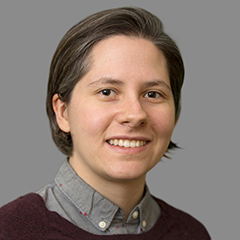The Equity Project (TEP) Charter School achieved widespread attention before it opened in 2009 because of its unique approach to rewarding and developing high quality teachers—including salaries of $125,000 and substantial professional responsibility—while receiving only the standard public funds available to any New York City charter school. TEP is a middle school that enrolled its first 5th-grade class during the 2009–2010 school year; in 2013 that class graduated from TEP’s 8th grade. Located in the Washington Heights neighborhood, TEP’s students are overwhelmingly low-income and Hispanic.
The Equity Project (TEP) Charter School achieved widespread attention before it opened in 2009 because of its unique approach to rewarding and developing high quality teachers—including salaries of $125,000 and substantial professional responsibility—while receiving only the standard public funds available to any New York City charter school. TEP is a middle school that enrolled its first 5th-grade class during the 2009–2010 school year; in 2013 that class graduated from TEP’s 8th grade. Located in the Washington Heights neighborhood, TEP’s students are overwhelmingly low-income and Hispanic.
Mathematica has been studying TEP’s operations and performance from the beginning. In a new study, Mathematica describes TEP’s instructional and personnel strategies, examines student characteristics and attrition rates, and reports impacts on student achievement during the school’s first four years.
Findings
Mathematica found that by the end of the 2012–2013 school year, TEP’s impacts on student achievement were consistently positive across subjects and cohorts, with especially large effects in math. Using benchmarks for average annual learning gains, the research team found that, compared to similar students in comparable New York City public schools, students who attended TEP for four years had test score gains equal to an additional 1.6 years of school in math, an additional 0.4 years of school in English language arts, and an additional 0.6 years of school in science. Using another relevant benchmark, TEP’s cumulative effect on student achievement over four years is approximately equivalent to 78 percent of the Hispanic-white achievement gap in math, 17 percent of the Hispanic-white gap in English language arts, and 25 percent of the Hispanic-white gap in science.
TEP’s student population is similar to those of other schools in the neighborhood, and TEP students are as likely to receive special education services as students in other New York City public schools. TEP’s student attrition rate is also similar to that of other comparable New York City schools.



